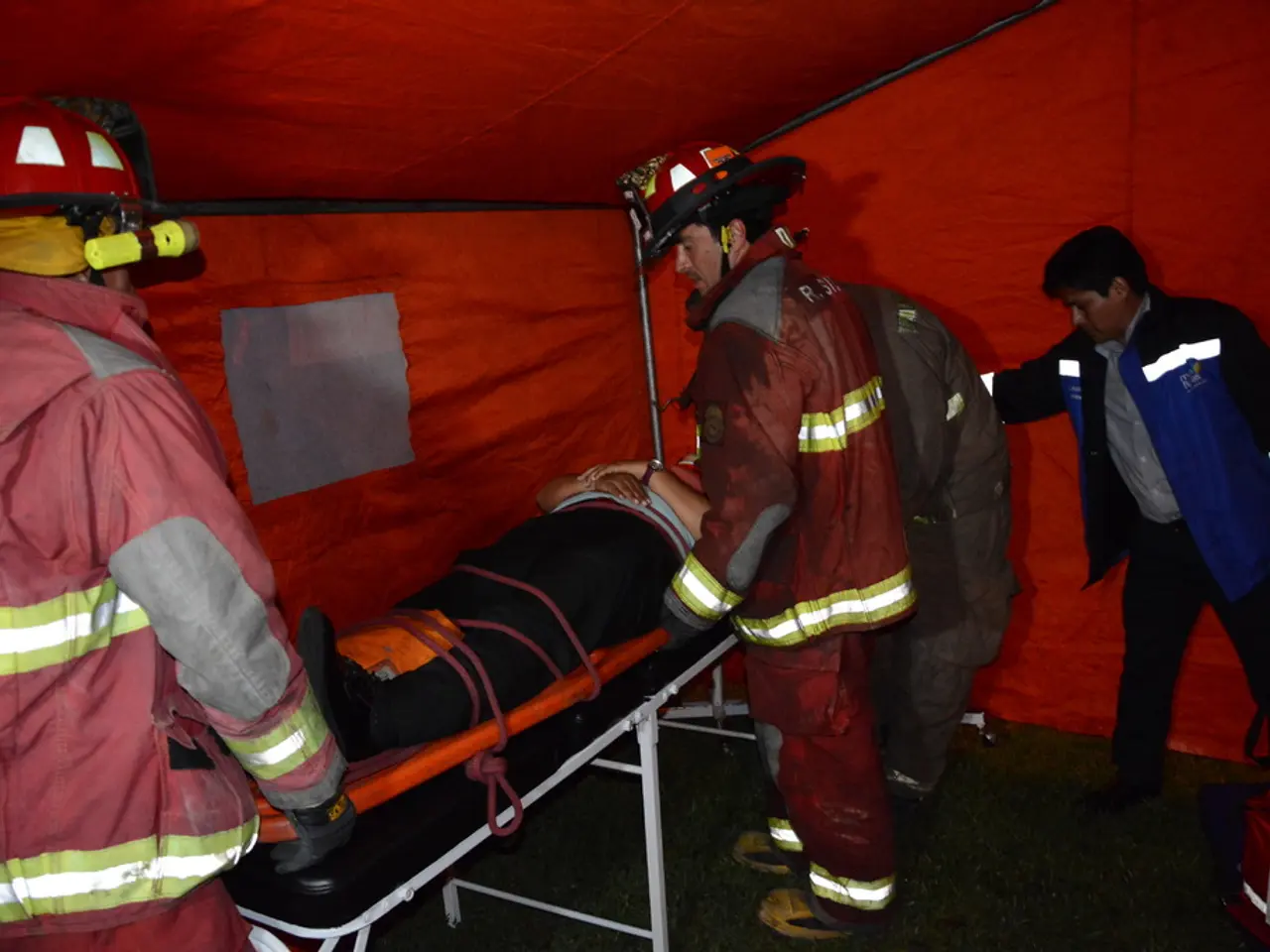Wilderness First Aid Basics: A Comprehensive Overview
Preparing for Outdoor Adventures: Essential First Aid Knowledge
Whether you're embarking on a kayaking trip, a hike, or a camping expedition, it's crucial to be well-equipped and knowledgeable about first aid. Here's a guide to help you navigate common wilderness injuries and emergencies.
First and foremost, it's essential to have key information at hand when calling for help. Be prepared with your location, the nature of the emergency, the number of people in your party, and your mobile number.
Knowing how to treat common injuries and illnesses is vital. This includes treating blisters, sprains and strains, fractures, head injuries, hypothermia and frostbite, heat stroke and dehydration, insect stings and bites, injuries from tools, and burns.
Consider registering for Emergency SMS, and take a first aid training course for a more comprehensive understanding of first aid principles for the outdoors. There are courses available throughout the UK and at local colleges, as well as specialist outdoor first aid courses.
In case of an injury or illness, assess the situation and determine the best course of action. If the patient's condition is serious, call for help immediately using a whistle, shouting, a mobile phone, or a satellite phone. In an emergency, call for Mountain Rescue by dialing 999 or 112 and asking for Police, then Mountain Rescue.
A basic first aid kit for outdoor activities should include essential items to treat minor injuries and manage common medical issues until professional help is available. Key items typically are:
- Adhesive waterproof plasters (various sizes)
- Triangular bandages (for slings or padding)
- Sterile dressings (large and trauma-size)
- Medical tape
- Alcohol wipes or antiseptic wipes for cleaning wounds
- Sterile non-woven swabs
- Scissors and tweezers
- CPR face shield or mask
- Foil blanket (to prevent hypothermia)
- Burns gel or burn dressings
- Gloves (preferably nitrile or latex)
- Eye pad dressing
- Skin closure strips or butterfly bandages (for small cuts)
- Emergency light stick or whistle
- Basic first aid guidance leaflet
Additional items helpful for some water-based and bushcraft environments include sodium chloride (saline) pods for eye irrigation, a pupil pen light for checking injuries, morale patch or identification markers for safety, extra wound dressings and tape for prolonged use, and a selection of other supplies.
Depending on the duration and remoteness of the activity, lightweight, compact kits like the MERE Hiking First Aid Kit or Hart Outdoor Multiday First Aid Kit are ideal, offering portability without sacrificing important supplies. Expanding or customizing the kit based on activities and individual medical knowledge is recommended.
In the wilderness, the goal of first aid is to stabilize the patient and prevent the condition from worsening until professional help arrives. If necessary, administer first aid, such as cleaning and dressing wounds, splinting fractures, and providing warmth and shelter.
In some scenarios, it may be necessary to evacuate the patient using a stretcher, rescue sledge, or helicopter, ensuring the patient is properly secured and stable. There are specialist outdoor first aid courses available for such scenarios.
In summary, focus on basic wound care, infection prevention, immobilization, and emergency support items that are versatile, water-resistant, and easy to manage during outdoor and water-based adventures. For more information, visit the websites https://www.cafirstaid.co.uk/ and https://www.mountaineering.scot/safety-and-skills/courses-and-events/our-courses/first-aid-courses.
Remember, in the wilderness, preparation and knowledge can make all the difference.
[1] Outdoor First Aid Guide [2] First Aid Kits for Outdoor Activities [3] Wilderness First Aid
- When venturing into nature for camping, hiking, or kayaking, having a well-stocked first aid kit is essential, including items such as adhesive waterproof plasters, triangular bandages, and sterile dressings.
- To ensure you're fully informed about dealing with common outdoor injuries and emergencies, consider enrolling in a first aid training course for outdoor environments.
- In case of an emergency, it's crucial to know the correct steps to take, including assessing the situation, calling for help using a whistle or mobile phone, and identifying your location.
- For those engaging in water-based and bushcraft activities, additional items like sodium chloride pods and pupil pen lights might be beneficial.
- In the wilderness, the goal of first aid is to stabilize the patient and prevent their condition from worsening until professional help arrives, and in some cases, evacuation may be necessary.
- MERE Hiking First Aid Kit and Hart Outdoor Multiday First Aid Kit are portable solutions that cater to the needs of outdoor and water-based adventures without compromising on essential supplies.
- In the spirit of outdoor living, taking proactive steps to acquire essential first aid knowledge and being well-prepared with a suitable first aid kit can make all the difference in ensuring a safe and enjoyable experience in the wilderness.
[1] First Aid Kits for Outdoor Activities [2] Wilderness First Aid [3] Outdoor First Aid Guide




